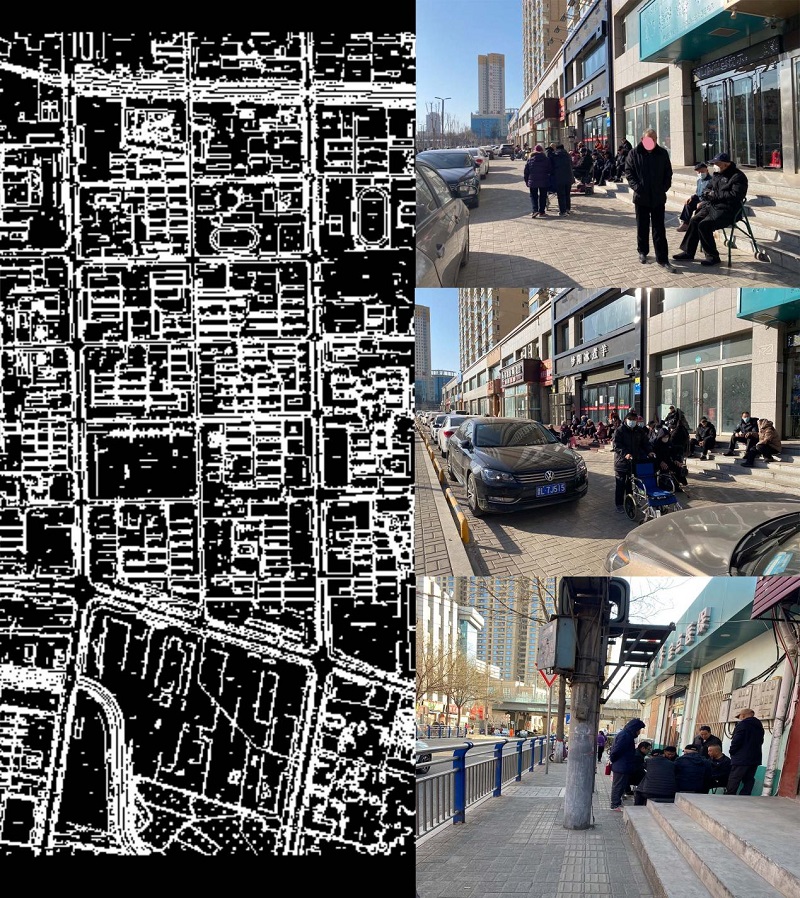Ying Liao is a PhD candidate in the School of Geography and Planning of Cardiff University, with membership of the SPACE research group, and a member of the Royal Geographic Society (with IBG). In addition, she is a lecturer in high education in China and has led people-centred urban design projects for the past 9 years.
‘Age-friendly’ urban design aims to support older people’s well-being against a backdrop of rapid growth of the aged population along with urbanisation. This research fills the gap in micro-scale scope and aims to create new and improved existing design policies and guidelines for building age-friendly cities and supporting inclusive relationships between public spaces and older users. Since around 2006, Global Age-Friendly Cities: A Guide (WHO 2007) has emphasised the main objectives and launched initiatives to build networks among focused cities in practices to achieve ‘Active ageing’ and ‘Ageing-in-Place’; as well as emphasising principles for building successful places for all, such as National Design Guide in the UK. However, one of the challenges still to be taken is how public space design can support quality of older people’s daily life.
Based on the RTPI Research Dissemination Strategy 2023 which aims to discover new concepts of urban design for health and well-being, our research renews the knowledge of age-friendly design in the particular cultural context of China, where there has been rapid growth of the aged population within the last two decades. The research findings create debates that may involve a wide range of scholars, policymakers, practitioners and designers to discuss well-designed age-friendly public spaces, but may also inspire broader city users to rethink their future living space and to develop further bottom-up mechanisms for urban design.
Challenging life circles (walking distance) depending on different Chinese aged cohorts
- Strengthened 300–500m (5-minute walking distance), as near as possible to home, caters for the physical, social and discovery requirements of the mid-old and old-old (generally over 70 years old).
- Potentially expanded over 15-minute walking distances (1–1.5km) caters for the young-old (55–69 years old) who are healthier and more energetic, with higher social expectations than the elderly.

Figure 1: No.2 typical diary shows dynamic traces of young-old within one week and the expanded distance.
Source: mapping produced by the author.

Figure 2: No.9 typical diary shows regular traces and high dependence on 5-minute walking distance of mid-old for one week of public space use.
Source: mapping produced by the author.
Key public space uses among Chinese older people in micro scale
- Green spaces - support all aged people’s physical, social and sense of belonging.
- Commercial spaces with continuity of small unite within 300–800m - inspires new design concepts in terms of suggested spatial realm and ideal commercial types, which can support older people’s combined requirements (going shopping, physical excursions and social activities and discovery).
- Availability of more shopping options (supermarkets, shopping malls) with expanded distances - can supply more discovery requirements, create more potential social opportunities, and cater for physical excursions for the healthier cohort.
- Importance of design ‘in-between’ spaces (threshold, edges, junctions, transition space) - combining diversity of design with indeterminacy of well-designed space can offer a balanced approach for broader and unplanned uses among older people

Figure 3: Undefined space - ‘in-between’ spaces adaptable for use by older people regularly.
Source: mapping produced by the author.
Key qualities of age-friendly park design
- Accessible distance from event-based space to nearby entrances (around 60m-70m) with more options for routes and with barrier-free features; and without visual obstacles
- Small unite (small events) as a ‘stop’ in a longer distance of transition space (over 100m) can offer more accessible spatial and social resources with reduced walking distance for older users
- Importance of design for multi-sensory experience - programmed group activity (event) as a good view for participating, sitting, watching, staying and socialising
- Small scale square with relatively enclosed by greenery
- Seasonal changeable landscape
- Nearby children-playing settings
- Diverse functional space(zones)
- Large size landmarks
- Events with familiar people
Read more about Ying's research on our Planning Research Matters hub.


